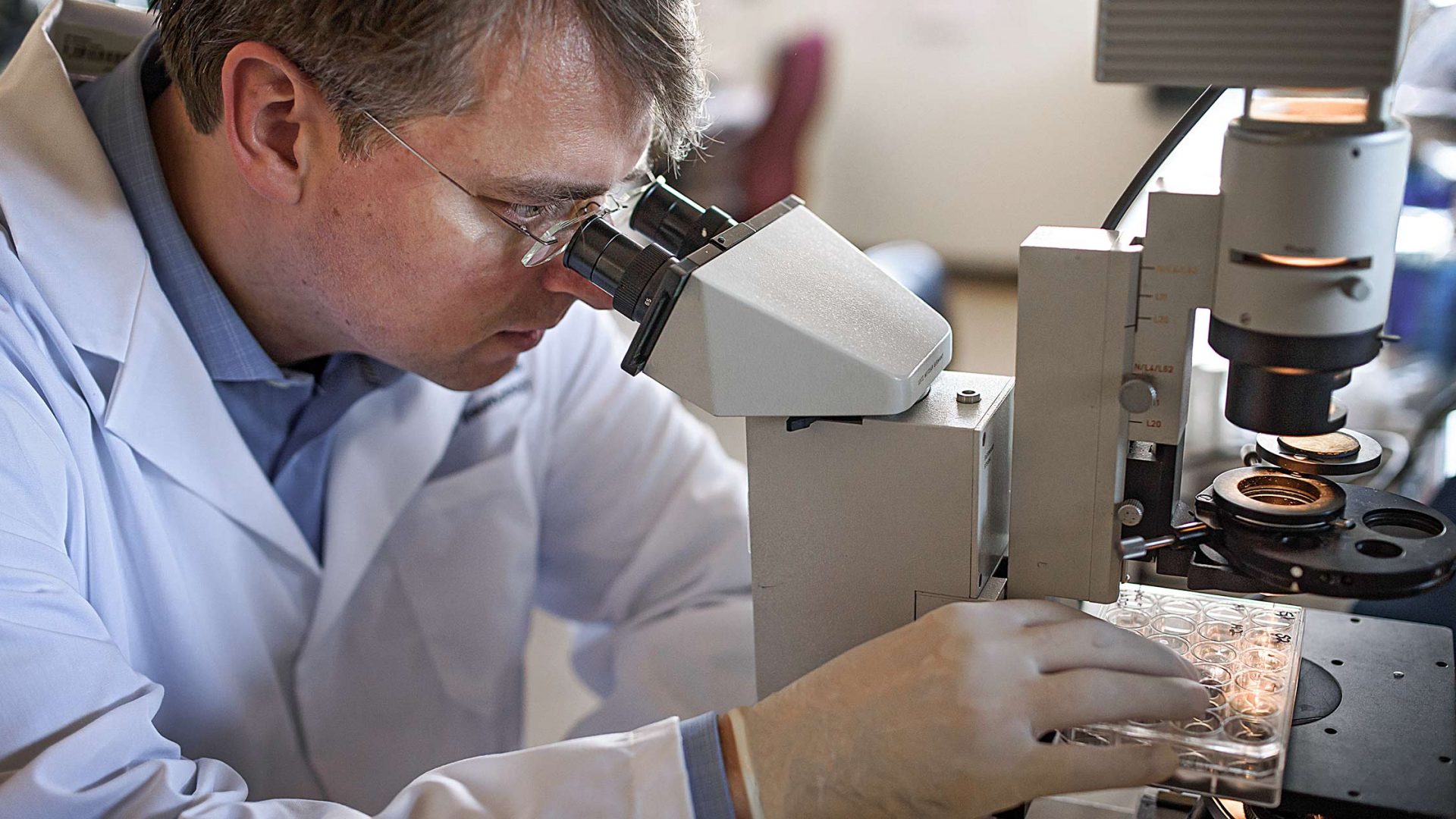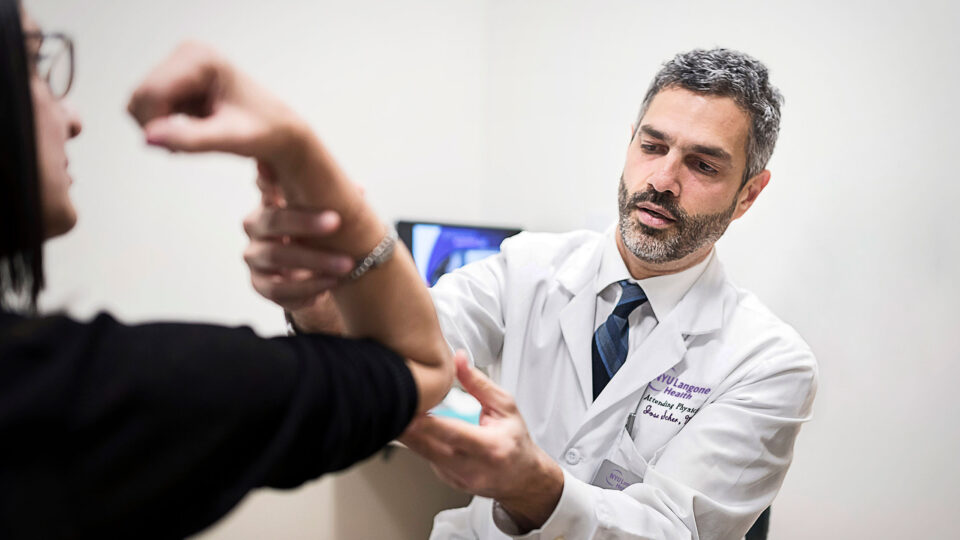NYU Langone Health’s internationally known Behçet’s Disease Center has forged strong collaborations with researchers in the Middle East, Japan, France, and elsewhere to help understand, diagnose, and treat the condition. The center’s leader, Johannes Nowatzky, MD, the Saul J. Farber Assistant Professor of Medicine and Pathology and director of the Behçet’s Disease and Ocular Rheumatology Programs in the Division of Rheumatology, also recently secured two R01 grants from the NIH to support new investigations into the mechanisms underlying this relatively rare but life-altering disease. Here, Dr. Nowatzky discusses his goals in expanding the program’s reach.
A Hub for Expertise and Innovation
Physician Focus: What makes the Behçet’s Disease Center so unique?
Dr. Nowatzky: We are building a truly comprehensive program with notable expansions across our three clinical, research, and educational components. In the clinical area, I have many years of experience with the disease in the Middle East, where it is most common. I’ve also recruited some of the very best rheumatologists, who can really think deeply about a patient referred with Behçet’s disease, or labeled as having it, and revise a diagnosis if necessary. This label is, many times, incorrect.
My laboratory supports the research part of the center. We conduct both basic and translational research. We have two R01 grants focused on Behçet’s disease—that’s quite unique because the NIH hadn’t previously awarded those types of grants for Behçet’s research in more than three decades.
On the teaching side, we train at all levels from fellows to continuing medical education. Much of the Behçet’s disease training that is directed to clinicians is traditionally considered to be in the rheumatology domain. However, conventional rheumatology training does not cover many of the skills needed to diagnostically deal with Behçet’s disease and the conditions that mimic it. For instance, developing a differential diagnosis of mucosal lesions or of subtle ocular findings that help determine whether a certain form of uveitis makes or breaks a Behçet’s disease diagnosis.
Physician Focus: Where do you see the program further expanding?
Dr. Nowatzky: One priority in the clinical sector is diagnostic accuracy and precision. That is a huge problem in Behçet’s disease because it doesn’t have seromarkers or other biomarkers, and no truly pathognomonic findings. There is a serious overdiagnosis in the United States, which has to do mostly with the understandable lack of familiarity of many providers with this rare disorder. At the same time, critically ill patients with Behçet’s disease sometimes do not get diagnosed, which can have serious consequences.
Here, our consult service can help. We see patients who have been labeled as having Behçet’s disease by their referring providers. When sending these patients to us, doctors need to state a reason for the consult. In more than 80% of cases, it is uncertainty regarding the accuracy of a Behçet’s disease diagnosis.
The other important direction of expansion is understanding disease mechanisms. Understanding the biology of this complex polygenic disease with its many different clinical phenotypes is a difficult, slow, and expensive process, but the clinical and scientific rewards are high. There simply is no real long-term progress without it. I feel privileged to finally have a real shot at doing this through the funding we secured recently, our combined clinical and scientific expertise in immunology, and our network of collaborators around the globe.
A New View of Immune Changes
Physician Focus: How is your research clarifying the disease biology?
Dr. Nowatzky: One of our R01 grants, Unraveling the role of HLA-B*51/ERAP1 in Behçet’s eye disease, deals with the disease directly. What has become clearer from our work over the last few years is that in a subset of patients with Behçet’s disease who carry not only HLA-B*51 but a haplotype that we study, ERAP1 Hap10, the disease is not just an HLA-B*51–associated disease. It may also be an HLA-B*51–restricted disease or an HLA class I–restricted disease.
“What has become clearer from our work over the last few years is that in a subset of patients with Behçet’s disease who carry not only HLA-B*51 but a haplotype that we study, ERAP1 Hap10, the disease is not just an HLA-B*51–associated disease. It may also be an HLA-B*51–restricted disease.”
Johannes Nowatzky, MD
What this means is there is likely a true mechanism here that alters presentation of peptides to CD8 T cells via HLA-B*51—or perhaps changes the interaction with other cells, such as natural killer cells. We recently published data that there is a change in the immune response if you genetically alter activity of ERAP1 in an HLA-B*51 restriction context. We also showed that the alterations in the immune phenotypes with this kind of genotype fall into the CD8 T cell compartment, and that there are changes in the frequency of CD8 T cells that have seen antigen versus those that have not.
These findings have implications for how we view this disease immunologically and how we may want to design treatments. We have targets now such as ERAP1 for which there are already compounds that can alter the activity of this enzyme, as well as other strategies.
Mapping Connections with Uveitis
Physician Focus: What about your second major line of research?
Dr. Nowatzky: The second R01 grant, Modulation of immunodominance in HLA class I associated uveitides, is delving into certain types of uveitis that have HLA class I associations but look profoundly different clinically, such as Behçet’s uveitis and HLA-B27-associated acute anterior uveitis. HLA class I/ERAP1 epistasis has relevance to other, more common diseases. In the context of Behçet’s disease with ERAP1 Hap10, for instance, when you also carry HLA-B*51, it increases the risk for Behçet’s disease to a level we have never seen before. That same enzyme haplotype or allotype, ERAP1 Hap10, actually protects from HLA-B27–associated ankylosing spondylitis and acute anterior uveitis.
We’re trying to figure out how this inverse relationship works. On a public health level, this is important because psoriasis and ankylosing spondylitis and acute interior uveitis are much more common than Behçet’s disease. If you identify mechanisms in the same pathway that are relevant to all of those diseases, it may be much easier to profit in the Behçet’s disease area from downstream clinical trials and pharmacological research testing new compounds for the treatment of those other diseases.






